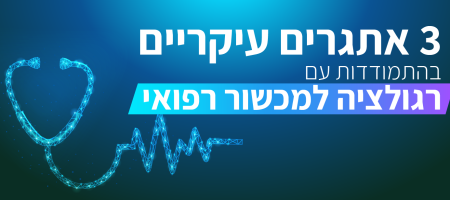In a timely response to the new FDA Cybersecurity RTA (Refuse to Accept) policy, effective from October 1st, the FDA unveiled its much-awaited final guidance on “Cybersecurity in Medical Devices: Quality System Considerations and Content of Premarket Submissions” on September 27, 2023.
This pivotal document marks a significant advancement from the 2014 Premarket Guidance, offering a more comprehensive and detailed set of requirements. It’s a game-changer for manufacturers, setting a high bar for ensuring that medical devices are not only effective but also robustly safe in their intended applications. Rooted in a risk-based philosophy of “Designing for Security,” the FDA sets forth an expectation for manufacturers to actively mitigate security risks across the Total Product Lifecycle (TPLC) – from inception to post-market phases.
This comprehensive approach hinges on the integration of a Secure Product Development Framework (SPDF), a strategic move to elevate the security standards of medical devices in an increasingly digital and interconnected world.
Key aspects in this guidance:
-
Applicability and Scope: The guidance applies to all medical devices, including the new term “cyber devices”. Pay attention – it’s a device that includes the “ability to connect”, which means, a definition that goes beyond the intent to be connected.
Manufacturers are expected to adopt a comprehensive approach to security, encompassing the device and its entire production, distribution, maintenance, and integration environments.
-
Secure Product Development Framework (SPDF): A central aspect of the guidance is the SPDF, a set of processes designed to identify and reduce vulnerabilities throughout the product lifecycle. This framework is encouraged to meet Quality System (QS) regulation requirements and enhance cybersecurity. Examples include NIST’s Cybersecurity Framework and IEC 81001-5-1 standards.
-
Quality System Regulation and Cybersecurity: Manufacturers are obliged to establish quality systems in compliance with 21 CFR Part 820, which now includes cybersecurity risk management and validation procedures. This integration ensures that devices are safe and effective, considering cybersecurity risks.
-
Documentation and Risk Management: Manufacturers must provide cybersecurity documentation (see Appendix 4 of the Guidance for a complete list). It includes among other things: cybersecurity measures, details on device design, infrastructure and integration.
This documentation is crucial for FDA submissions and must align with the device’s cybersecurity risk.
-
Third-Party Software Components: A critical component of the FDA’s new cybersecurity guidelines is the emphasis on the Software Bill of Materials (SBOM) for medical devices. The SBOM is an essential inventory that enumerates all third-party software components used in a medical device. This transparency is vital for identifying potential vulnerabilities and ensuring ongoing security maintenance throughout the device’s lifecycle.
-
Cybersecurity Testing: is crucial for demonstrating the effectiveness of design controls. While software development and cybersecurity are interrelated, cybersecurity necessitates additional testing beyond standard software verification and validation. This extra layer of testing is essential to show the effectiveness of cybersecurity controls in a specific security context, thereby ensuring that the device maintains a reasonable assurance of safety and effectiveness.
-
Incident Response: Description of features such as security event detection and logging, forensic data capture, fails safe mode, backup and restore.
-
Maintenance: Instructions about security maintenance and lifecycle management, including instructions for secure updates, information about the level of provided support and software end-of-support dates, as well as information about secure decommissioning.
-
Cybersecurity Management Plans: FDA recommends that manufacturers establish plans for identifying and communicating vulnerabilities post-release. These plans should outline how the manufacturer will maintain the device’s safety and effectiveness, including aspects like periodic security testing, patch development, and communication of updates to customers. Coordinated vulnerability disclosure is also emphasized.
In conclusion,
The FDA’s latest guidance marks a pivotal moment in the intersection of cybersecurity and medical device manufacturing. It’s an exhilarating development, recognizing the intricate and dynamic nature of cybersecurity in an industry where real-time attacks are a stark reality. This guidance propels the medical device and healthcare sectors forward, acknowledging that cybersecurity threats aren’t just distant risks that can be deferred or mitigated with occasional patches. It brings to the forefront the critical urgency of attack prevention in an environment where every second counts.
The true essence of this guidance lies in its patient-centric approach.
As manufacturers and stakeholders in the medical device industry, we are constantly reminded that at the heart of our efforts are patients whose well-being and safety hinge on the reliability and security of the medical technologies they depend on. The FDA’s recommendations are a clarion call to ensure that these devices are not only technologically advanced but also fortified against the ever-evolving landscape of cybersecurity threats. It’s a commitment to safeguarding patient safety through proactive, robust cybersecurity measures, underscoring that the protection of medical devices is intrinsically linked to the protection of human lives.







